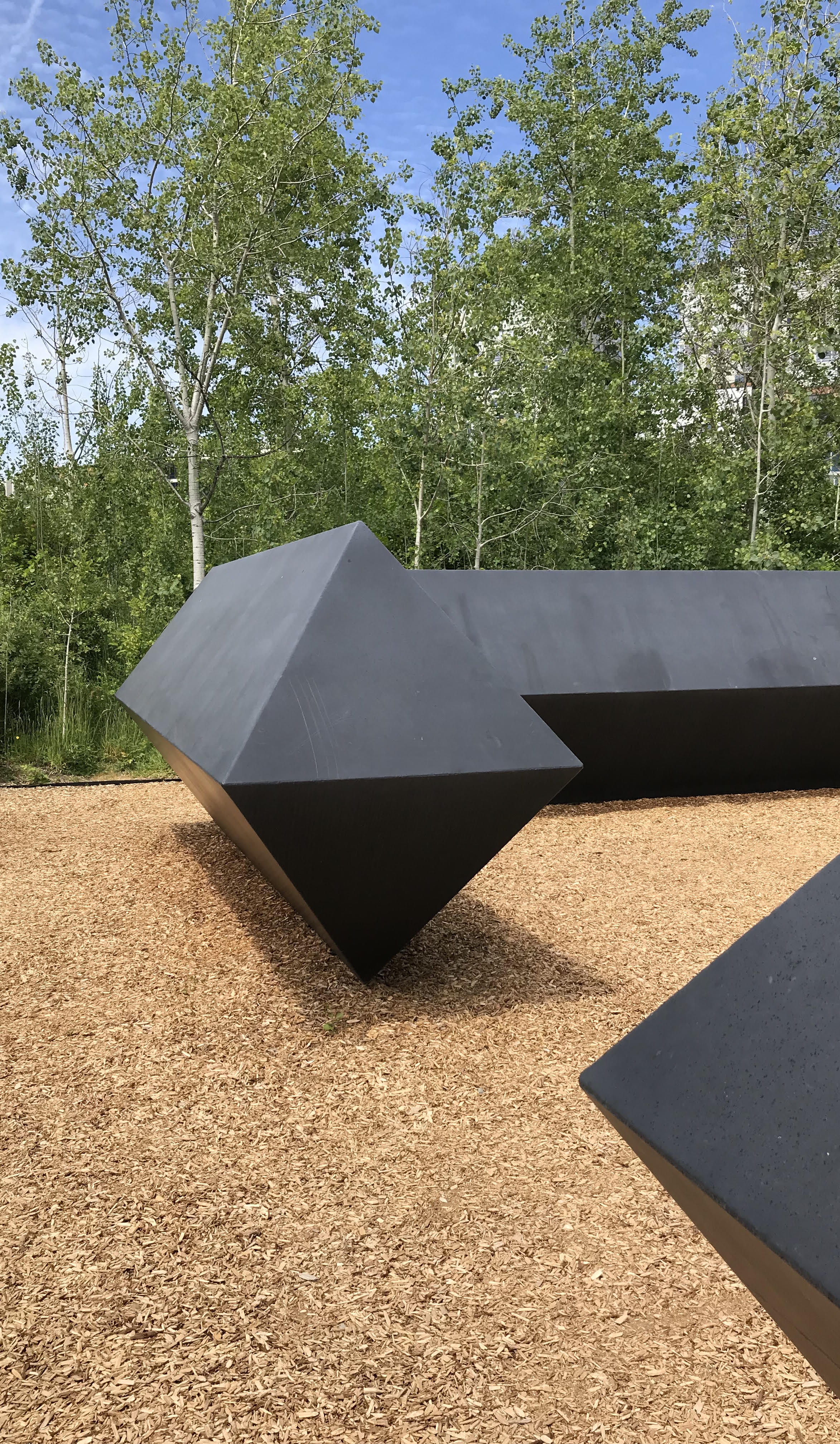
Have you ever found yourself in a situation and felt like you did not have a choice — searching desperately for an alternative and not finding one?
It is like walking through a doorway that leads into an empty room with no exit except for the opening you used to enter. Why bother at all, why expend the energy? Perhaps just being still is best. This is what came to mind when I discovered the work entitled Stinger tucked away in a small grove of trees within a leftover triangular urban median at Seattle’s Sculpture Garden. I have been to the sculpture garden countless times but embarrassingly just recently discovered the work. I saw it first from an outlook that cantilevered over the adjacent street.
From this perch you can see the entire piece in its context. I was briefly excited by this new discovery but as I examined the work I understood its futility. It seemingly could be fully appreciated without taking another step — one opening that led into an empty rectangular space. I am confident this is not the way the artist intended this work to be experienced, at least initially.
If the work were approached from the ground, the sense of its futility would have unfolded gradually. However, from this vantage point I found myself questioning if I should even take the trek down the stairs, over the railroad tracks and up the hill to experience this work up close. It had been a long day, and I was tired.
To be honest, if I were not blogging about art I would not have made the effort. I can’t say I experienced anything I did not anticipate from my initial vantage point. However, benefiting from this comprehensive overview, my sense of futility deepened. It was not a sad or depressing feeling but rather an acute awareness — an incredibly clear understanding of what I was experiencing. Tony Smith, the American artist, who built the original work out of plywood in 1968, wrote these haunting notes on his conceptual drawings: “One Bad Gate …. What do you do when there is only one gate?”
